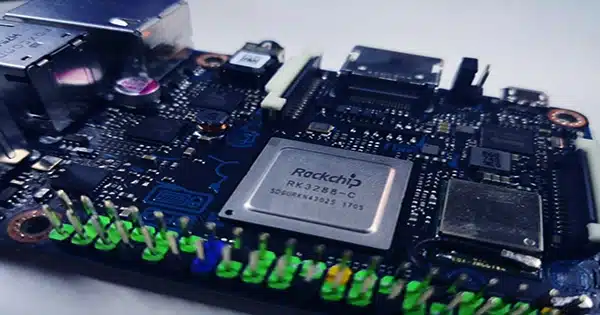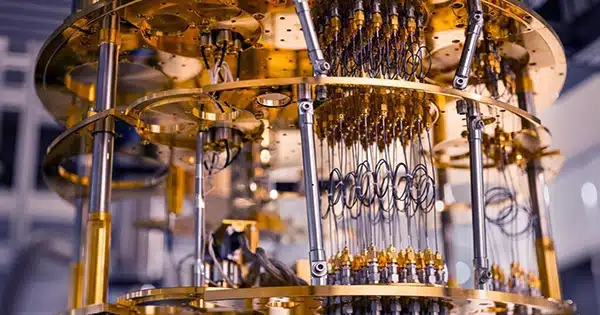Harvard researchers have achieved a significant milestone in the pursuit of stable, scalable quantum computing, an ultra-high-speed technology that will enable game-changing breakthroughs in a wide range of sectors, including medicine, science, and finance.
The team, led by Mikhail Lukin, the Joshua and Beth Friedman University Professor in Physics and co-director of the Harvard Quantum Initiative, has developed the first programmable, logical quantum processor capable of encoding up to 48 logical qubits and performing hundreds of logical gate operations, which is a significant improvement over previous efforts.
The study, published in Nature, was conducted in partnership with Markus Greiner, the George Vasmer Leverett Professor of Physics; MIT colleagues; and QuEra Computing, a Boston firm established on technology developed in Harvard laboratories.

The system is the first to demonstrate large-scale algorithm execution on an error-corrected quantum computer, paving the way for early fault-tolerant, or reliably uninterrupted, quantum processing.
Lukin regarded the discovery as a potential tipping moment similar to the early days of artificial intelligence: long-theorized concepts such as quantum error correction and fault tolerance are beginning to bear fruit.
“I think this is one of the moments in which it is clear that something very special is coming,” he remarked. “Although there are still challenges ahead, we expect that this new advance will greatly accelerate the progress toward large-scale, useful quantum computers.”
Denise Caldwell from the National Science Foundation agrees
“This breakthrough is a tour de force of quantum engineering and design,” said Caldwell, acting assistant director of the Mathematical and Physical Sciences Directorate, which funded the research under the National Science Foundation’s Physics Frontiers Centers and Quantum Leap Challenge Institutes programs. “The team has not only accelerated the development of quantum information processing by using neutral atoms but opened a new door to explorations of large-scale logical qubit devices, which could enable transformative benefits for science and society as a whole.”
It’s been a long, complicated journey
In quantum computing, a quantum bit or “qubit” is a single unit of information, similar to a binary bit in classical computing. For more than two decades, scientists and engineers have demonstrated that quantum computing is, in principle, conceivable by manipulating quantum particles such as atoms, ions, and photons to generate physical qubits.
However, efficiently harnessing the strangeness of quantum mechanics for computation requires more than merely accumulating a huge number of qubits, which are intrinsically unstable and prone to collapsing out of their quantum states.
The true currency of the realm is so-called logical qubits: bundles of redundant, error-corrected physical qubits that may store information for use in a quantum process. Creating logical qubits as controlled units, similar to classical bits, has been a major challenge for the industry, and it is widely acknowledged that unless quantum computers can run safely on logical qubits, the technology will not take off.
To date, the best computer systems have proven one or two logical qubits with one quantum gate operation—equivalent to a single unit of code—between them.
The Harvard team’s discovery builds on Lukin’s lab’s pioneering work on a quantum computing architecture known as a neutral atom array over several years. It is now being commercialized by QuEra, which recently signed a licensing agreement with Harvard’s Office of Technology Development for a patent portfolio based on advancements made by Lukin’s team.
The system’s fundamental component is a block of ultra-cold, suspended rubidium atoms, which allow the atoms—the system’s physical qubits—to move about and be coupled into pairs—or “entangled”—during computation.
Entangled pairs of atoms combine to produce gates, which are units of computing capability. Previously, the researchers exhibited minimal error rates in entangling operations, demonstrating the stability of their neutral atom array technology.
Using lasers, the researchers have shown parallel, multiplexed control of a complete patch of logical qubits using their logical quantum processor. This result is more efficient and scalable than controlling individual physical qubits.
“We are trying to mark a transition in the field, toward starting to test algorithms with error-corrected qubits instead of physical ones, and enabling a path to larger devices,” said article first author Dolev Bluvstein, a Griffin School of Arts and Sciences student in Lukin’s group.
The team will continue to work on showing new types of operations on its 48 logical qubits and configuring their system to run continuously, rather than manually cycling as it currently does.
















